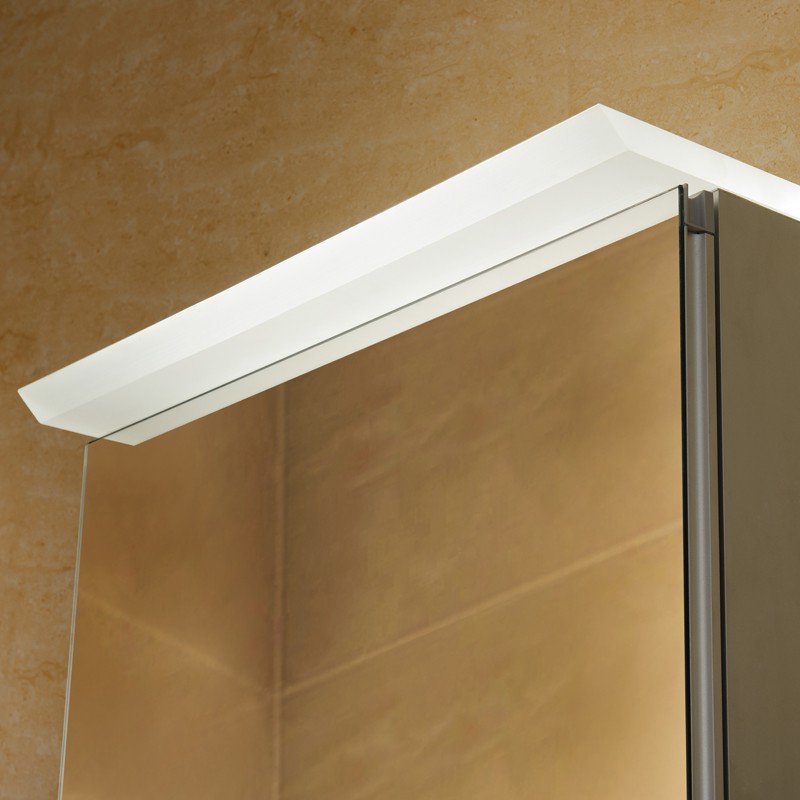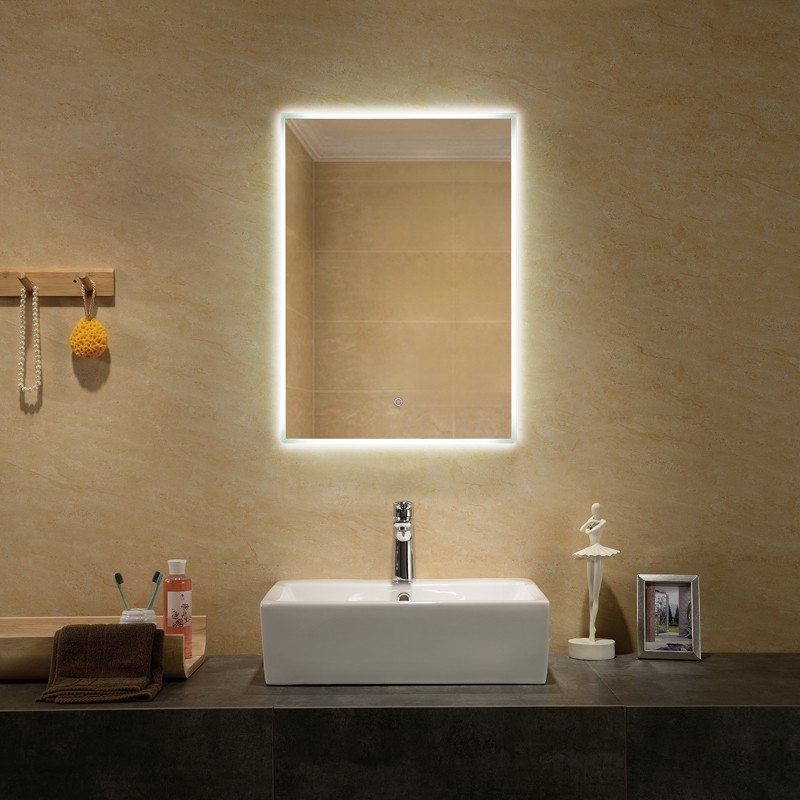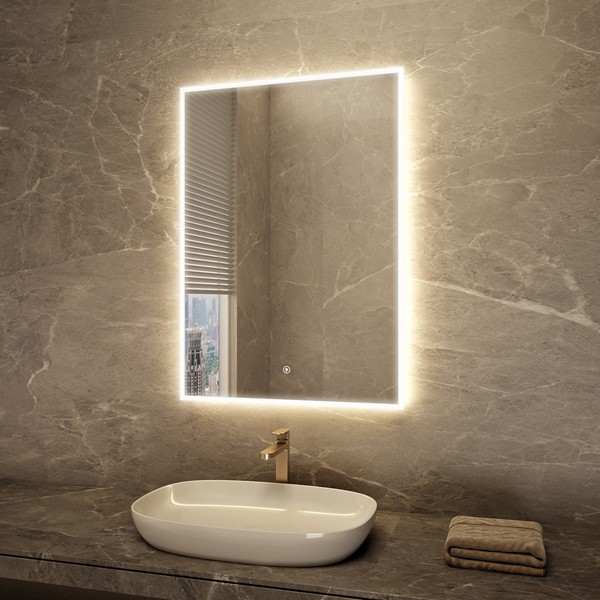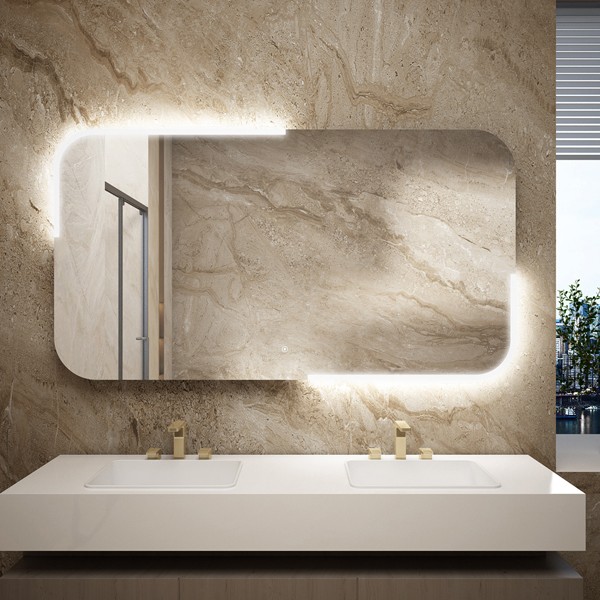Install your bathroom mirror to improve the functionality and appearance of your space. Whether you're renovating or updating, the right mirror and installation techniques will enhance the overall ambiance. Make sure to understand the process and use proper techniques to ensure a secure and well-positioned mirror that meets your needs.
Properly installing a bathroom mirror requires preparation, precise measurement, and using the right tools. The process will vary depending on the type of mirror and wall material. For instance, a frameless mirror may require a different approach compared to a framed one. It's important to ensure that the hardware is compatible with your wall, whether it's drywall, plaster, or masonry. By carefully following each step, from preparation to the final adjustments, you can achieve a sturdy and level installation.
Key Takeaways
-
The installation of your new mirror will be safe and secure with proper preparation.
-
Proper measuring and marking are essential for a balanced and centered mirror.
- To achieve a polished and professional appearance, simply follow the step-by-step installation process provided.
· Identify the Mirror Type
· Transform your space with a contemporary touch by selecting a frameless mirror. To securely mount these stylish mirrors, use specialized clips or adhesive, as they do not have a traditional frame for support.
· A framed mirror typically comes equipped with hangers or wire on the back, allowing you to easily hang it on nails or screws that are secured in the wall.
· Learn more about bathroom mirrors with this practical guide.
· To hang a mirror, you will need the following tools and items: Gather the necessary supplies.
|
Tool/Item |
Purpose |
|
Measuring Tape |
For precise measurements of the space and the mirror. |
|
Level |
To ensure the mirror is hung straight. |
|
Stud Finder |
To locate studs for a secure anchor. |
|
Screwdriver |
To tighten screws or secure mounting hardware. |
|
Wall Anchors (if needed) |
For additional support in drywall where no stud is present. |
When examining various glass products, one may notice significant differences in the appearance and texture of the edges. These variations serve more than just visual purposes; they also play a critical role in safety, durability, and integration with other components. Different types of edging techniques are used to achieve these varying finishes, each tailored to specific requirements and aesthetics.
Choose from a range of different glass edge types to fit your specific needs and preferences, from basic treatments that remove sharpness to more intricate polishing techniques that enhance the glass's visual appeal. The type of edge finish you select will greatly impact how the glass interacts with light, its tactile feel, and where and how it can be used. For example, a pencil polish edge provides a smooth and rounded finish, perfect for tabletops and furniture, while a flat polish offers a sleek and contemporary look that is ideal for display cases and mirrors. By understanding the purpose and aesthetics of different edge types, you can confidently choose the best option for any glass or mirror application.
Key Takeaways
-
When it comes to safety, durability, and aesthetics, the finishing of the glass edges is crucial.
-
Different types of edges are available to meet various functional and stylistic requirements.
-
Choose an edge that will enhance performance and seamlessly integrate with other elements.
Types of Glass Edges
Explore the 15 different types of glass edges available for your projects.
Flat Polish/Ground
Both polished and ground edge workmanship create a smooth surface on both sides of the edges, preventing sharpness. However, the polished edge uses a finer material for a sleek and clean look while the ground edge generates a satin appearance, reducing reflection.
For a sleek and minimalistic glass display, consider using flat polish or ground edges. These edges are commonly used for shelves, mirrors, and table tops, giving a clean and modern look to any glass application.
Pencil Polish/Ground
Enhance the appearance of your edge with Pencil polish/ground glass. Say goodbye to sharp edges and hello to a soft, curved finish like a pencil's curvature. This versatile option is perfect for circular table tops.
Chamfer
Update your glass decor with a chamfered edge. This distinct, beveled edge angled at 45 degrees on both the top and bottom will provide a refined touch, ideal for frameless mirrors. Additionally, it removes any sharpness for a stylish and elegant appearance.
Bevel
The beveled edges add dimension and a prismatic effect to the glass, enhancing its elegance. Mirrors with beveled edges have a classic and refined appearance.
Waterfall Edge
For a modern touch, consider a waterfall edge with a curved, cascading finish that resembles flowing water. It's perfect for custom design elements that call for a fluid and organic appearance.
Double Bevel
Add a second bevel to the existing beveled edge of the glass to achieve a decorative effect known as the double bevel glass edge. This technique is commonly used in mirror frames, tabletops, and other glass decorative items.
Bevel Both Sides
Beveled glass edges are angled downwards, giving a lighter and thinner appearance while preserving the reflective appeal of traditional beveling.
Ogee
Ogee edges are renowned for their distinctive S-shaped profile, bringing a touch of elegance and vintage charm to your glass. They are particularly suitable for creating a period-style look or replicating antique designs.
Ogee Bevel
Combine the ogee profile with a beveled edge to create the ogee bevel edge, perfect for adding a touch of luxury and intricacy to statement pieces and premium furnishings.
Bull Nose
This edge style features fully rounded bullnose edges, making it one of the safest options due to the lack of sharp edges. It is the perfect choice for frequently used surfaces such as countertops.
Miter Edge
Choose a miter edge for a seamless angle connection, typically used to create a thicker look in glass displays and contemporary furniture.
Clean Cut Edges/Untreated Edge
A clean-cut edge is a raw edge immediately following the cutting process. It is commonly utilized when the glass edges will be hidden in frames or channels.

Seamed Edges/Sanded Edges to Remove Sharpness
The edges are sanded to dull sharpness, providing a safer handling experience. While not as smooth as other finishes, seamed edges are practical for less noticeable uses.
Triple Bevel
The triple bevel edge creates a multi-layered bevel around the glass perimeter, adding depth and a prismatic effect that catches the light. This unique design is perfect for accent pieces and art decor, adding a touch of sophistication and elegance.
Chipped
The edges are slightly chipped to give a handmade and rustic appearance, perfect for those seeking a unique touch in their artisan glasswork or decorative accents.
The Edging Process
Throughout the edging process, your glass will go through various stages to achieve a polished and smooth edge. These stages include grinding, polishing, and beveling, all of which are crucial for the end result. In addition, safety seams are incorporated to ensure that the edges are safe to handle.
Grinding
When grinding your glass edges, make sure to use a wheel with embedded diamonds. This will help to shape and smooth out the raw, jagged edges of the glass, resulting in a more polished appearance.
Polishing
After grinding, use a sanding belt to polish the edges. This will give the glass a smooth finish and remove any leftover scratches or imperfections from the grinding process.
Beveling
Crafted with angled cuts instead of perpendicular edges, the bevel has a decorative finish that adds an aesthetic touch and helps prevent chipping by deflecting stress.
Safety Seams
In the end, safety seams are added, which gently sands the edges to eliminate any sharpness. This creates a secure edge for handling and installing, making sure the glass can be used safely without the danger of cuts.

Edge Finish and Appearance
Polished Edges
The fine abrasive materials used in the process of treating polished edges give glass a smooth, glossy finish that reflects light and adds a refined look. This not only enhances the beauty of the glass but also eliminates any sharpness, making it safer to handle.
For a professional look, polished edges are the perfect choice.
-
Display cases
-
Glass tabletops
-
Shelves
Frosted/Matte Finishes
A frosted or matte glass finish gives the appearance of an etched design, creating a softer lighting effect and reducing glare. This special finish has a subtle satin shine, adding a touch of sophistication while minimizing fingerprints, making it perfect for:
-
Bathroom fixtures
-
Decorative doors
-
Privacy screens
Textured Edges
Enhance the tactile and visual aspect of glass with textured edges, ranging from slightly roughened to intricately patterned. This customizable and handcrafted feature adds a unique touch, perfect for:
-
Artistic installations
-
Custom furniture
-
Feature pieces within a room

Considerations for Edge Types from a Practical Perspective
Having various types of glass edges serves multiple purposes, such as eliminating sharp edges, improving appearance, and impacting maintenance. Each type of edge has its own advantages and difficulties in these aspects.
Safety and Sharpness
-
Choose this product for a sleek and polished look, with edges smoothed for safety during use.
-
The beveling process used on our elegant beveled glass creates a finely polished angle on the edge for safety.
Cleanliness and Maintenance
-
Seamed Edges: The edges are gently polished to remove any sharpness without being overly shiny, making them efficient at trapping dust and in need of regular cleaning.
-
This item features a gently curved edge that helps with cleaning, and offers a balance between safety and maintenance requirements.
Structural Performance
-
To ensure safety in high-traffic areas, opt for a flat-polished or pencil edge to minimize risks.
-
Proper edge treatment can increase the lifespan of the glass by preventing chips and cracks.
Improve structural durability: Properly processing edges can be beneficial during assembly.

Applications of Glass Edge Types
Furniture and Decorative Use
For more upscale furniture pieces like bespoke glass tabletops, look for a smooth, polished edge that enhances clarity and elegance. In the case of unframed mirrors, which are common in bathrooms and vanities, a chamfered edge is typically used to soften the sharpness and add a subtle touch of style.
Furniture Type
Recommended Glass Edge
Table Tops
Flat polished, pencil, beveled
Decorative Mirrors
Chamfered, beveled, flat polished
Architectural and Structural
In architectural applications such as door panels and window construction, the edges must prioritize safety and durability. Seamed edges are commonly utilized as they are sanded down to eliminate sharpness. For more decorative features like glass stair railings or frameless doors, a bullnose or ogee edge offers a pleasing and secure aesthetic.
|
Structural Element |
Recommended Glass Edge |
|
Doors |
Seamed, pencil |
|
Windows |
Seamed, flat polished |
Retail and Display
To ensure clarity and safety in retail settings, display cases must have polished edges. Glass shelves with a flat polished or pencil edge offer a smooth finish that showcases products effectively without taking away from the display. For an extra touch of design, consider adding beveled edges to your glass shelving, creating a unique prism-like effect that enhances the visual appeal of your displayed items.
Display Feature
Recommended Glass Edge
Display Cases
Polished, beveled
Shelves
Flat polished, pencil
 Shanghai Divas Glass Co.,Ltd
Shanghai Divas Glass Co.,Ltd
